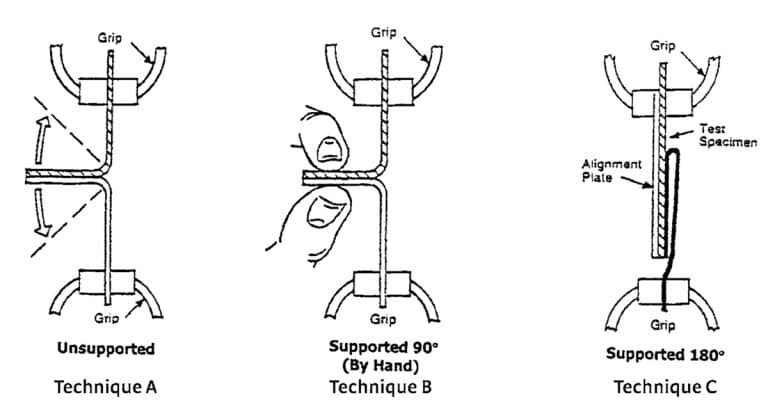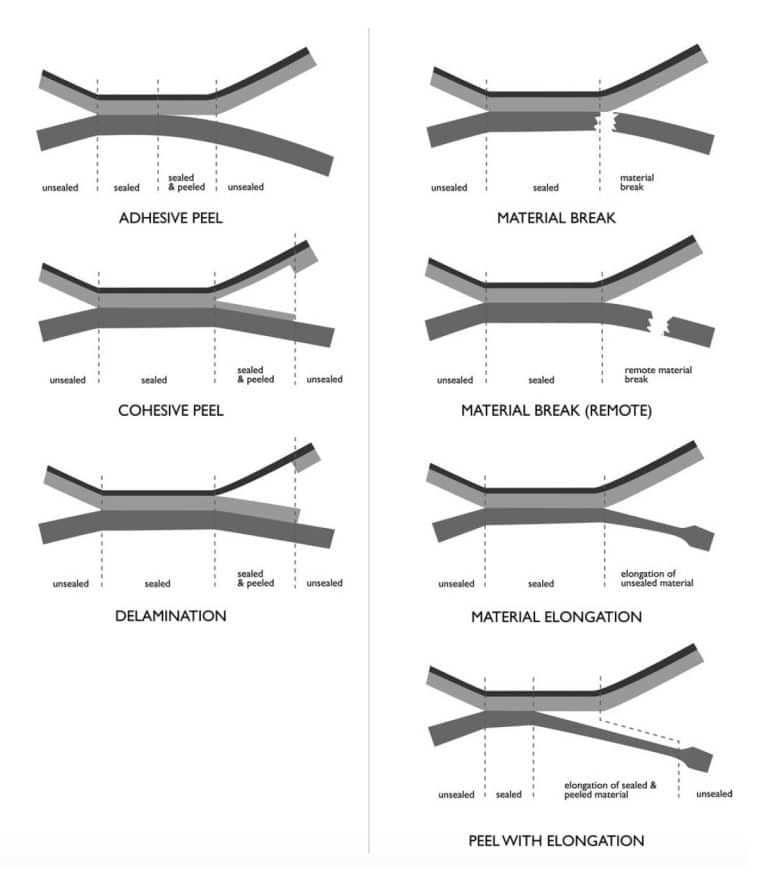Seal Strength Testing For Product Packaging
What is seal strength?
Seal strength measures the amount of force needed to part (or break) the two layers of a packaging seal. This force is measured when the seal is under tension and thus is a measure of tensile strength.
Why is seal strength testing important?
Seal strength testing ensures that your packaging can provide (and maintain) a sterile barrier for your product. Seal strength testing ensures package stability through evaluating packaging for modes of seal failure under tension.
Process validation, control, and capability verified quantitatively.
How is seal strength testing performed?
A is an unsupported technique where each end of the sample is fixed in opposing grips. In this arrangement, the seal is unsupported while the test is performed. The second technique, Technique B, involves using hand support. Technique B supports 90 degrees by hand. In this arrangement, each end of the sample is mounted in opposing grips, and the seal is hand-supported at a 90-degree angle that is perpendicular to the specimen’s gripped ends. For the third and final technique, Technique C, the least flexible end of the sample is supported flat against a gripped alignment plate. The most flexible end is folded 180 degrees over the seal and held in the opposing grip during testing. Technique C supports 180 degrees of support via the alignment plate.
Examples of fixtures for Technique A-Technique C of FIG. 1 of ASTM F88 are reproduced below.

Seal strength testing is performed at ambient temperature with prepared seal test samples. Seal test specimens are prepared by cutting slips of packaging material such that edges are clean-cut and perpendicular to the seal’s direction. Next, the specimen’s sealed area is centered between grips on a tensile testing machine such that the seal line is perpendicular to the direction of pull. The tensile testing machine measures the tensile load and separation between the grips during seal strength testing. The seal is tested at a set rate of grip separation until failure. The maximum force encountered as the sample is stressed to collapse, and the failure mode is recorded. Both peel force and seal strength can be determined depending upon the seal’s failure mode. If adhesive failure, cohesive failure, or delamination occur as a sample’s mode of failure in the seal area during testing, the tensile testing device may measure peel force. Suppose there is no significant peel in the seal area during testing. In that case, the average force to failure may not be an important metric as the mode of failure is primarily due to the packaging material breaking, tearing, or elongating. If grip travel only results in peel (adhesive failure), the energy to cause the tensile testing device may determine the energy to seal separation.
Standard modes of failure and common interferences from ASTM F88 FIG. 4 are reproduced below as FIG. 2. In FIG. 2, seal separation modes are shown on the left, and interference modes displayed on the right. Note that either or both materials of a seal can exhibit one or more partial or complete interferences. Delamination, when not a designed seal separation mode, is an interference.

Seal Strength Testing Report Data Includes:
- Identification of material tested
- Equipment and test method or practice used to form seals if known
- Equipment used to test seals
- Ambient conditions during tests (temperature and humidity)
- Grip separation rate
- The initial grip separation distance
- Seal width
- Machine direction of the material in relation to the direction of pull
- Force (strength) values to three significant figures.
- Identification of the technique of holding the tail (Technique A, B, or C) and any unique fixtures used to hold the specimens
- Record of which material is clamped in each grip (if applicable)
- Number of samples tested and method of sampling
- Any other pertinent information related to test results
- Visual determination of the mode of specimen failure
- Maximum force encountered as each sample is
- stressed to failure
- Average peel force (if applicable)
- Other data not compromised by interferences
- Any statistical calculation deemed appropriate (i.e., mean, range, and standard deviation)
Limitations to seal strength testing
The ASTM F88 guidance cited herein provides testing methods for seal strength testing at ambient temperature. This particular guidance does not offer hot seal strength testing information. These testing methods are also only for seals between a flexible material and a rigid material. Techniques A-C reduces the risk of bending a component. If an element is bent, a portion of the force measured during testing is a bending force and not seal strength. Thus, bending forces can cause potential inaccuracies in steal strength testing.
Additionally, the material between the seal and the grips can interfere with seal strength measurement. Thus, the clamp separation distance is initially set at a low value to minimize this form of testing interference. Note that seal characteristics such as shrinkage, deformation, and burn-through can affect the seal strength test outcome.
MycoScience is a contract manufacturing organization specializing in sterile syringe and vial filling. MycoScience also offers Preservative Efficacy Testing, Sterilization Validations, Bioburden Testing, Cleaning Validations, Microbial Aerosol Challenge Testing, Accelerated Aging, Microbiology Testing, Cytotoxicity Testing, Bacterial Endotoxin Testing, EO Residual Testing, Package Integrity Testing & Environmental Monitoring services medical devices and allied industries. MycoScience is an ISO 13485 certified facility.
References
American Society For Testing And Materials. Standard Test Method for Seal Strength of Flexible Barrier Materials. West Conshohocken, PA, United States. (ASTM F88/F88M-09).
Sharing this in your social netwroks

